Methods for Detection, Identification, and Control of Cryptosporidium
VerifiedAdded on 2022/11/23
|36
|1048
|358
Report
AI Summary
This report provides a comprehensive overview of Cryptosporidium, a microscopic parasite causing cryptosporidiosis. It delves into various detection methods, categorizing them into clinical and water/environmental approaches. The clinical methods, including direct fluorescent antibody tests and molecular techniques, are discussed in terms of their individualization, effectiveness, and contribution to research, along with their drawbacks such as being lengthy and costly. The water and environmental methods, which involve testing and treatment of water sources, are analyzed for their protective measures, cost-effectiveness, and large-scale coverage, while also acknowledging their limitations in eliminating all contaminants and the need for regular maintenance. The report underscores the importance of considering the advantages and disadvantages of each method in making informed diagnosis and treatment decisions. The report also includes references to other related topics such as Epidemiology, Subtyping, Pathogenicity, Antimicrobial resistance and Control of Cryptosporidium, which provides a broader perspective on the parasite.
1 out of 36
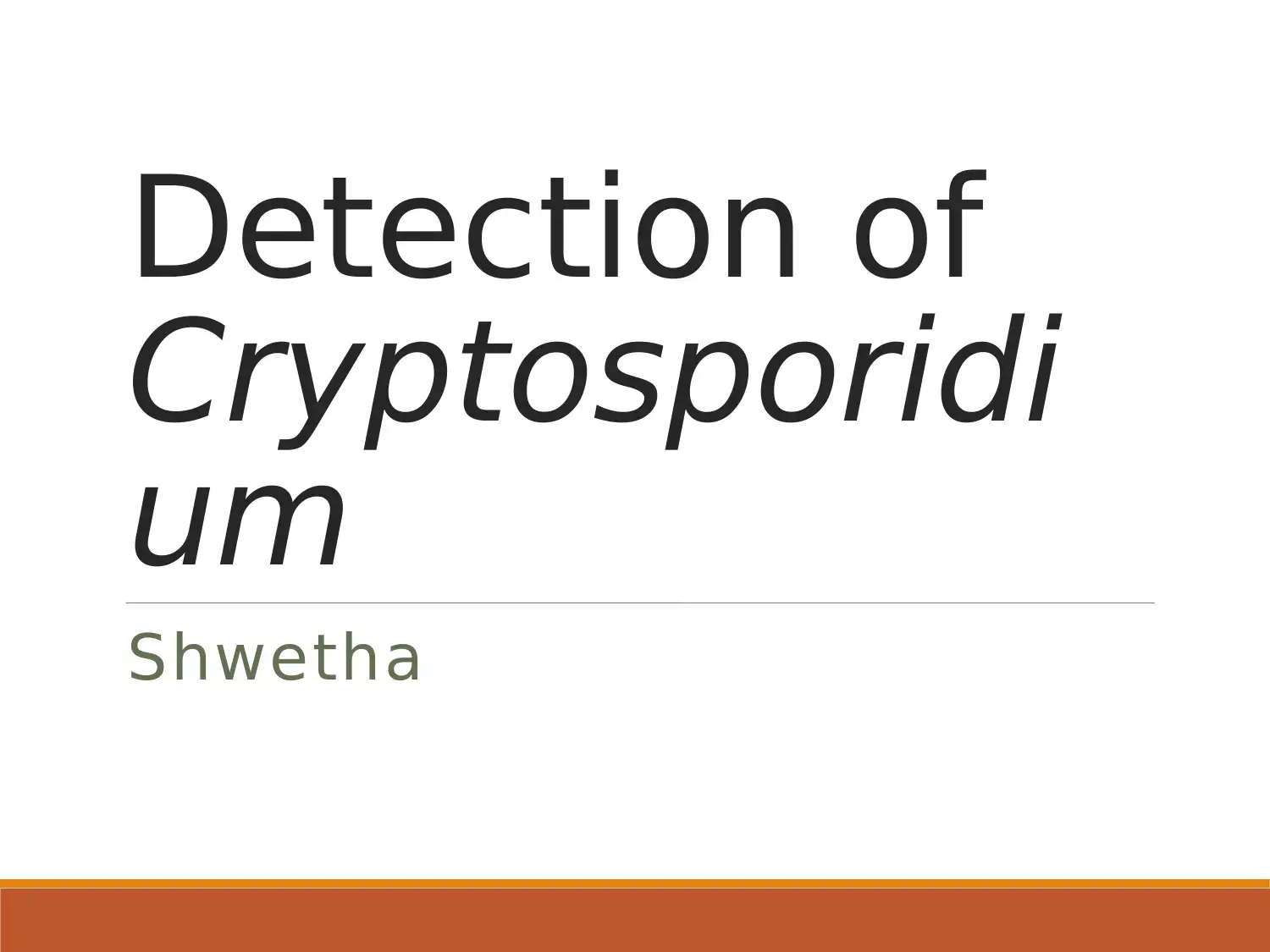

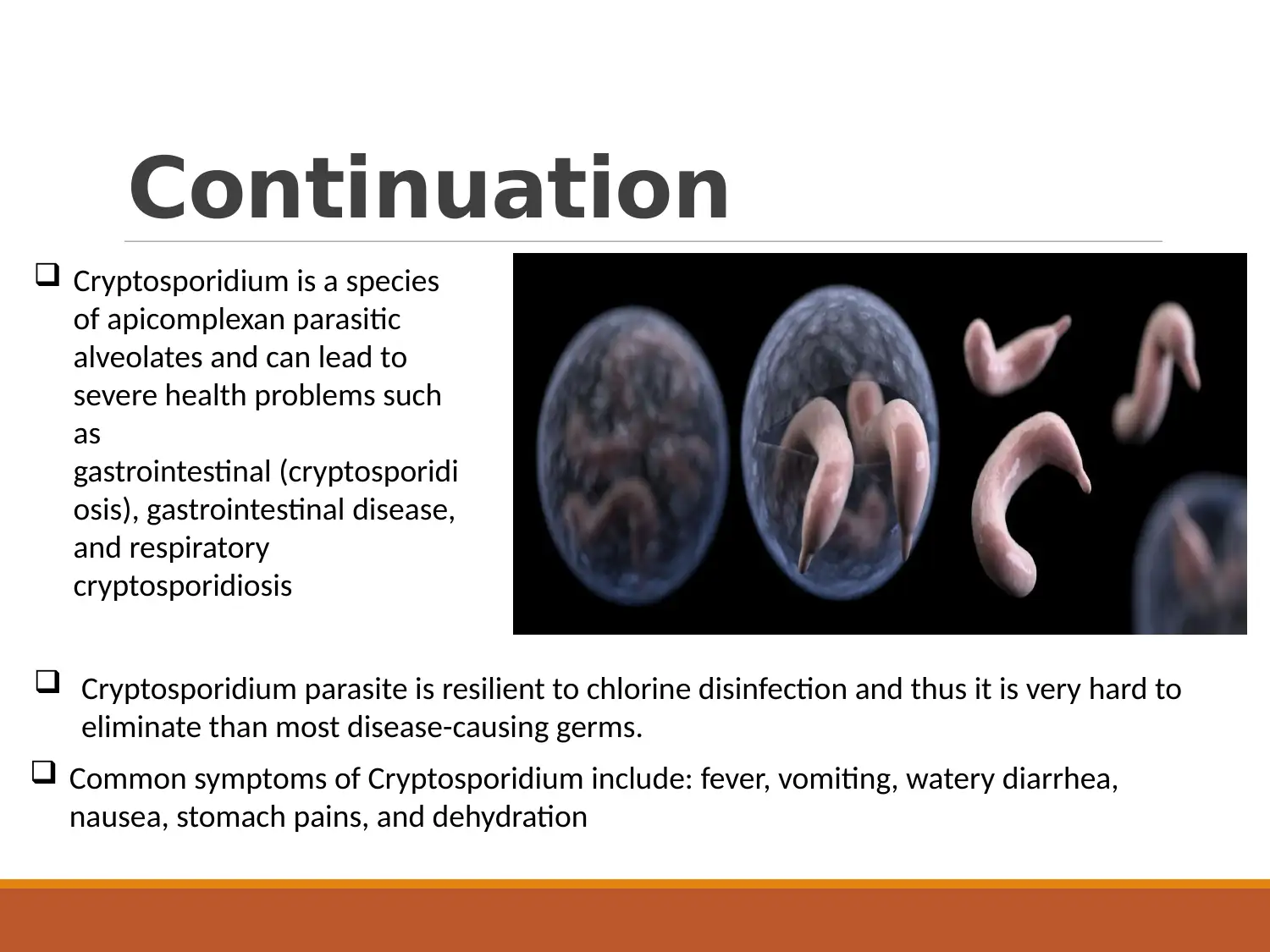

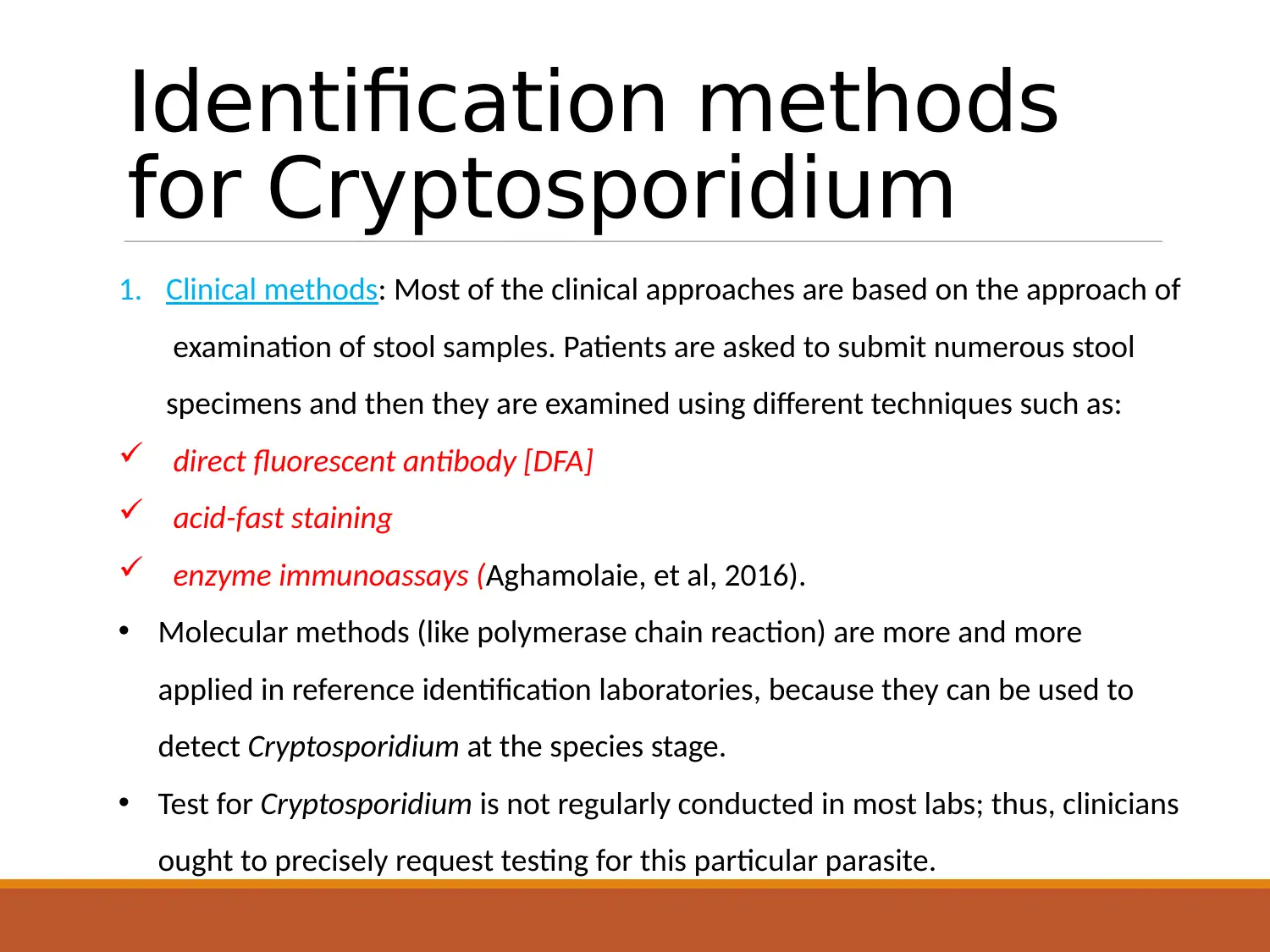
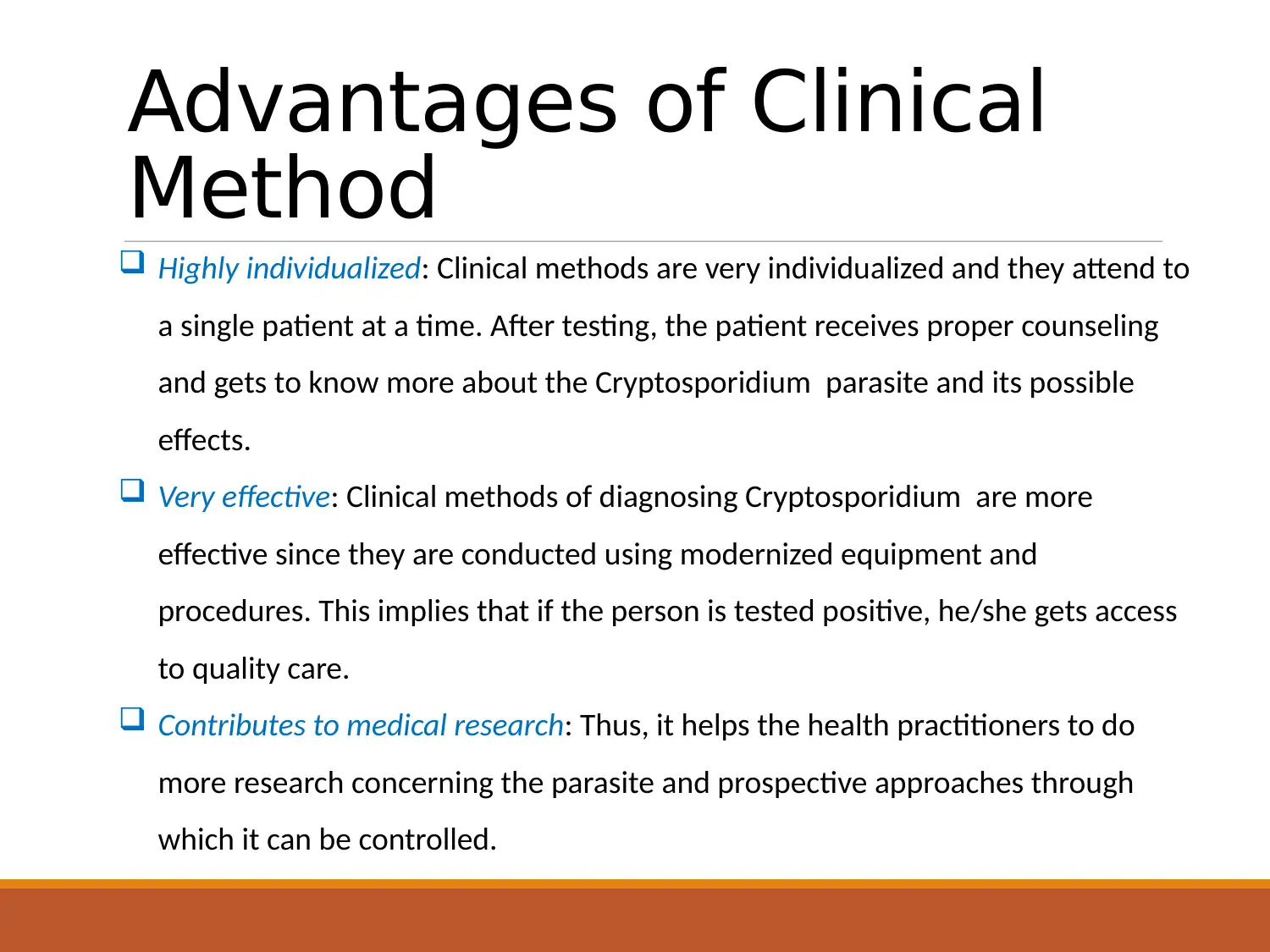

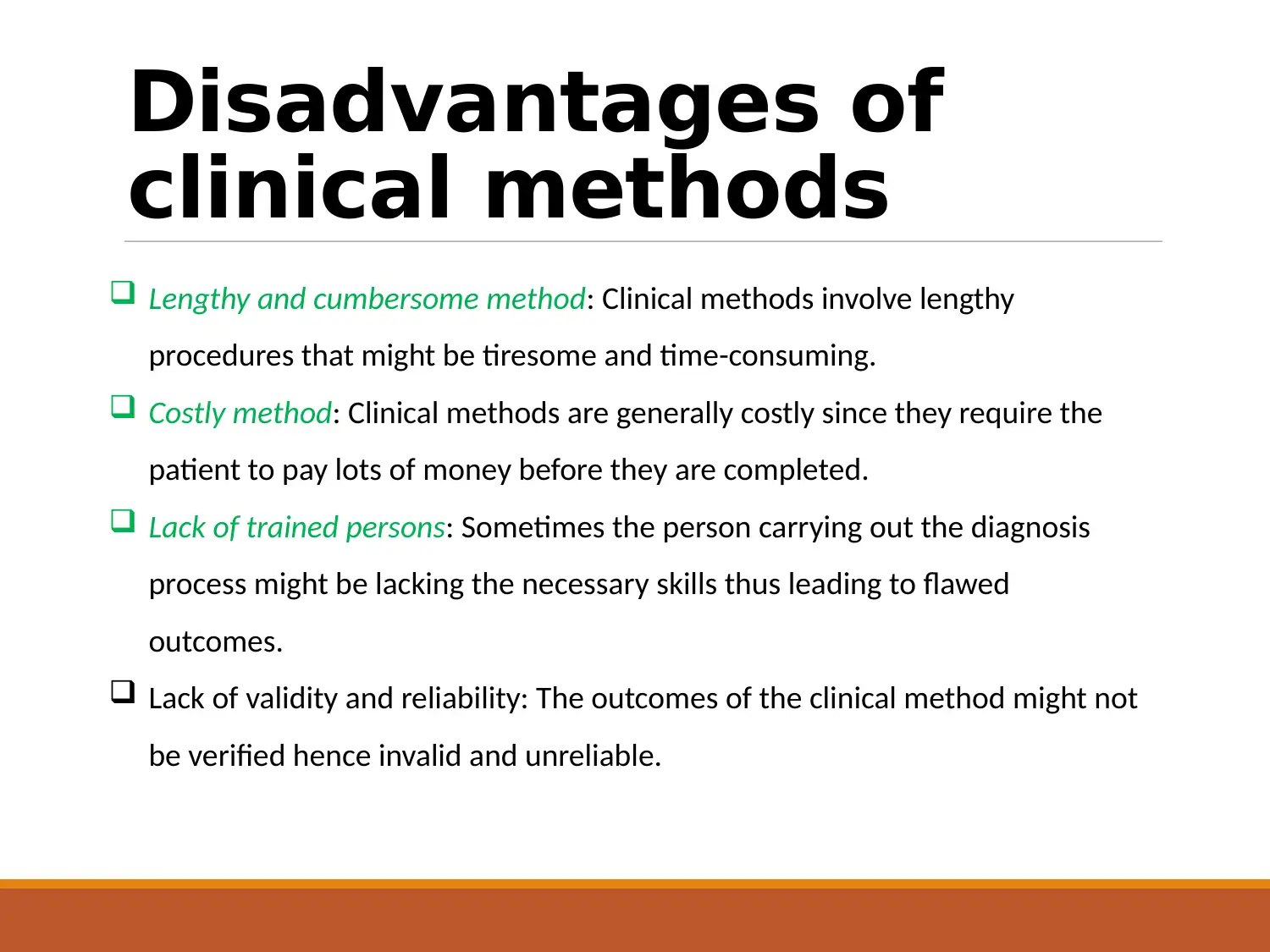
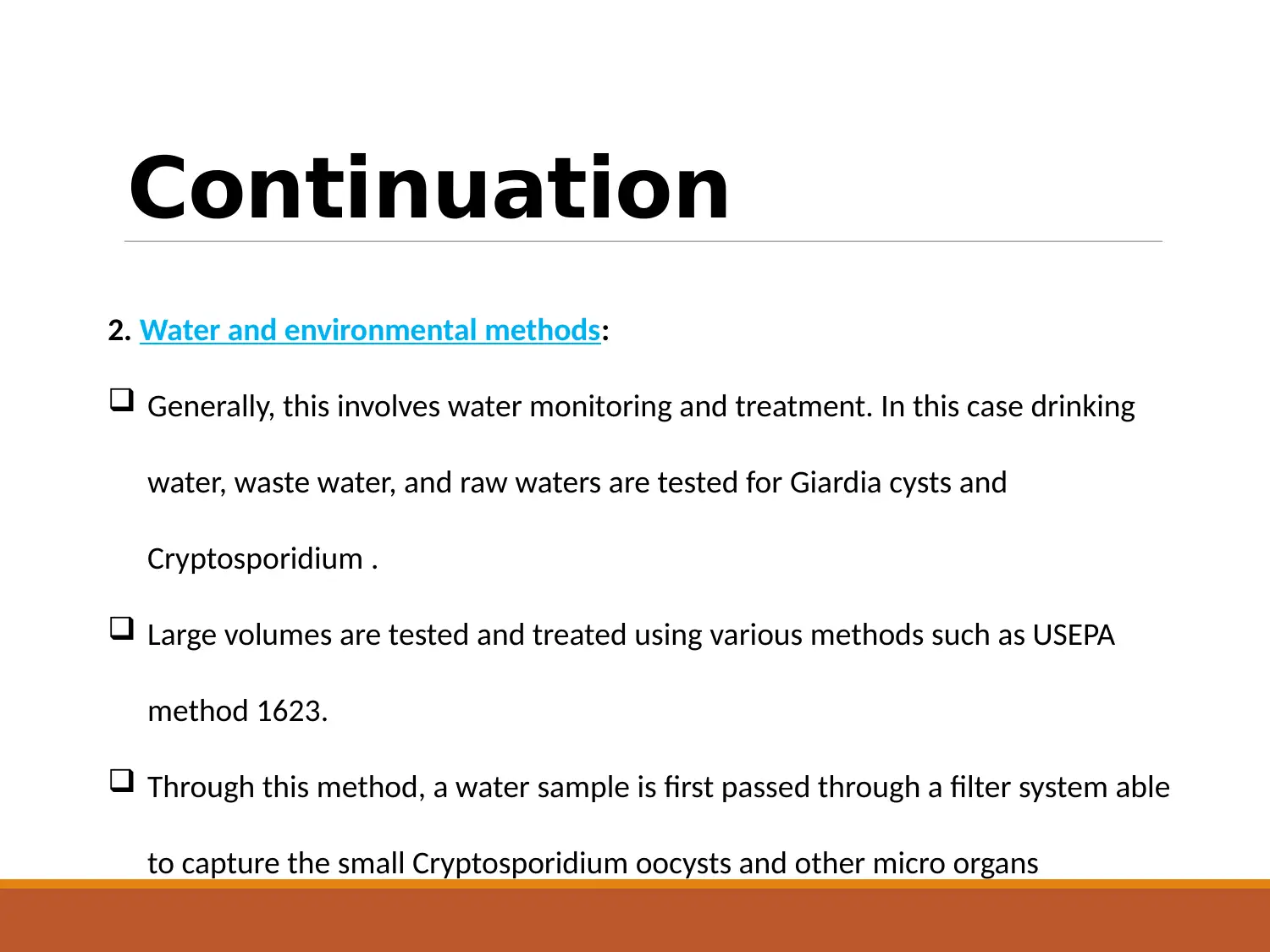


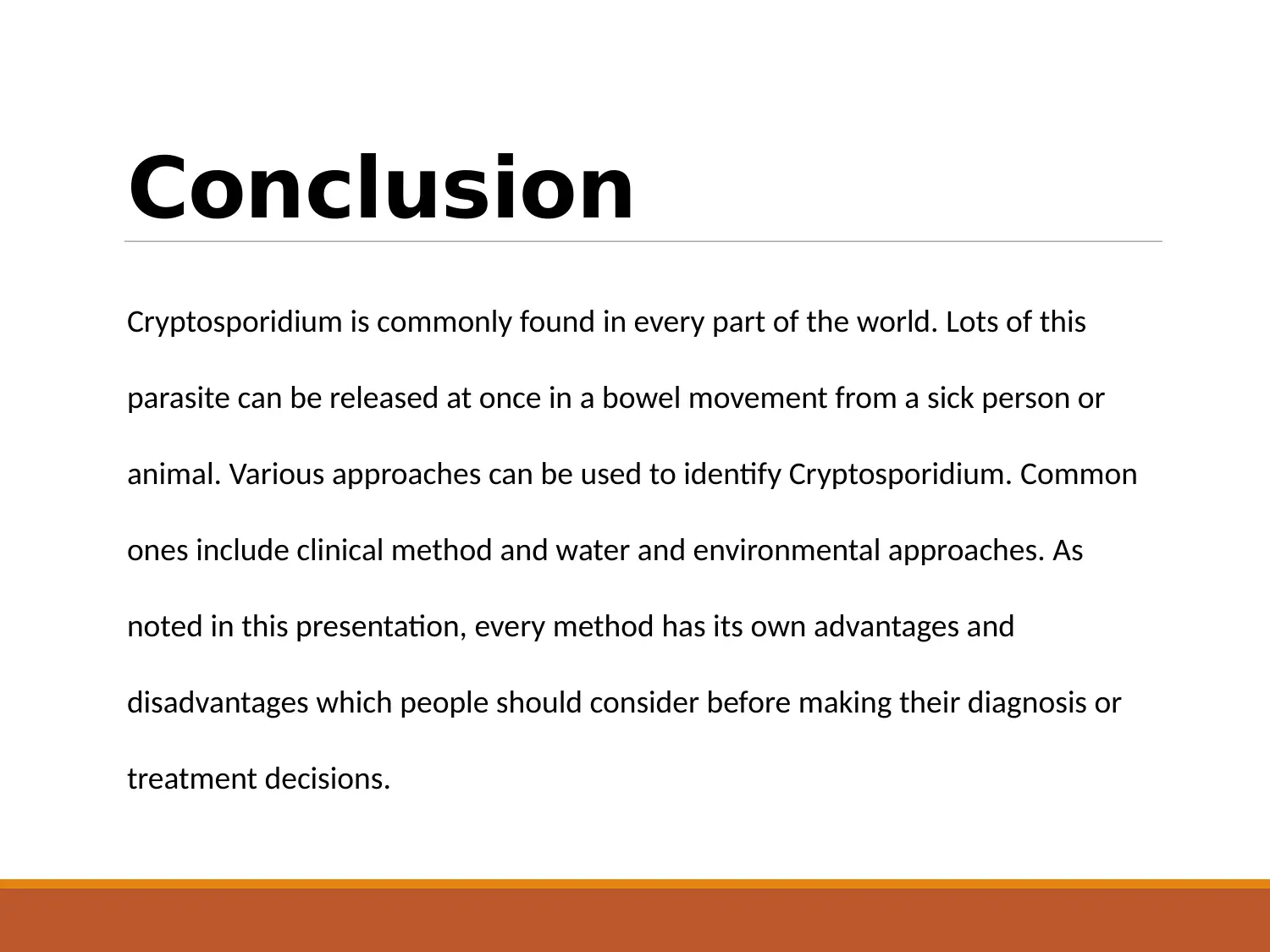




![[object Object]](/_next/static/media/star-bottom.7253800d.svg)